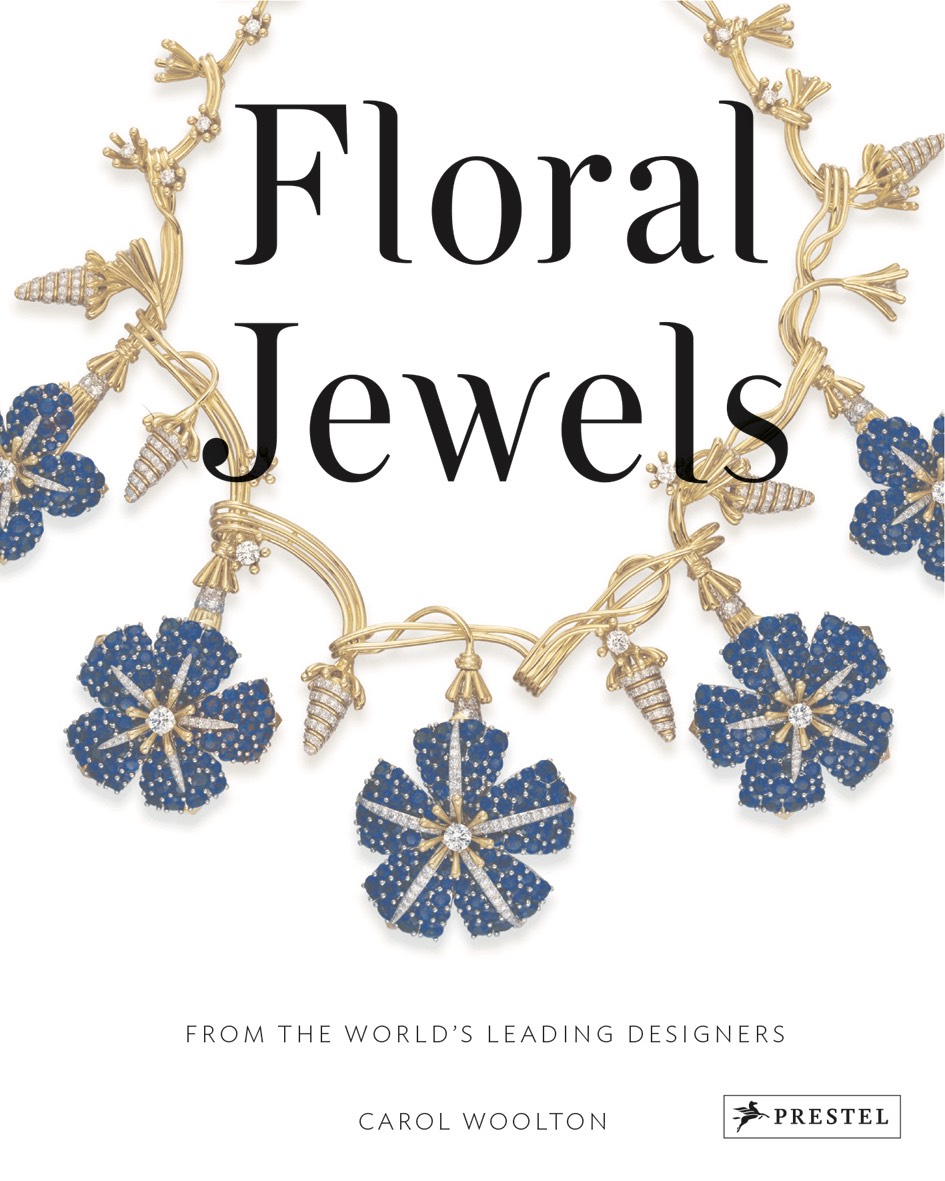
Among the fantastic pieces in Woolton’s book is this pansy brooch by Lalique, circa 1903-1904. Lalique S.A. Collection
British author, editor, and fine jewelry expert Carol Woolton presents the history and splendor of botanically inspired pieces from some of the most exquisite jewelry houses in her book, Floral Jewels from the World’s Leading Designers (Prestel Publishing Ltd., London, 2014). In this excerpt, she shares how designs reflect colors and patterns in nature.
The fragility of the flower and the intense hardness of stones fascinate because neither can be exactly reproduced. We may be able to mimic the chemical composition of a diamond, but the results won’t show the innate phosphorescence of the gem, nor its colour or history. To the frustration of many gardeners, the blue rose remains elusive; and the perfect herbaceous border or rural idyll within a garden will always be subject to the vagaries of nature. Our eyes fill with wonder as we look into the mesmerising depths of a three-million-year-old natural stone, or watch the first wild snowdrops drifting like foam on a sea of green, and observe the first heart-stopping violet raising its tremulous purple head each spring. Flowers and jewels appear to be conjured from the earth by a form of primeval magic.

Blue Lotus necklace by Wendy Yue, 2013
It is colour more than anything that heralds each new season, and there is a comforting reassurance in the repeated patterns and jewel-like shades of the landscape. The lovely lush greens of spring sprout from the earth with an intensity similar to that of a grassy peridot or moss-coloured beryl. The summer landscape in Scotland turns grape-purple: a mauve blaze of heather, peppered with pink or tanzanite blue thistles, tumbles down hills, and inky-black lochs, like jet, shimmer beneath an amethyst veil of violet. The burnt, crisp, leaf-strewn golden colours of autumn like a magnificent sunset fade as the light from the sun slowly dwindles and winter turns the landscape to icy rock crystal, dotted with the white satin pearlised petals of camellias and ruby-red holly berries.

Violet brooch by Boivin, 1962 © Christie's Images Limited (2004)
Jewellers are drawn to the challenge of conveying the essence of each season in their work, as well as the complicated curving of the variously shaped petals of individual flowers. Some blooms in particular, such as the rose, peony or orchid, hold a universal appeal for jewellery designers, and are recreated as close as possible to nature, with accurate colours and petal shapes. Other flowers lend themselves to more abstract representation, designers creating a flow of light and colour on these organic sculptural forms.

Golden Orchid ring by Anna Hu, 2010
Jewellers similarly work from their imagination. Some invent new species, or use unusual arrangements of stones, unnatural proportions or particular shapes to create their own unique plants. Others might choose to study the fragility of flowers, depicting one moment in the life of a bloom, either budding, flowering or slowly withering, documenting with hard stones, pearls and enamel that one sublime moment in nature, so that it lasts forever in a jewel.
The burnt, crisp, leaf-strewn golden colours of autumn like a magnifcent sunset fade as the light from the sun slowly dwindles and winter turns the landscape to icy rock crystal, dotted with the white satin pearlised petals of camellias and ruby-red holly berries.

Floral Jewels from the World's Leading Designers by Carol Woolton, Prestel Publishing Ltd., London (2014). Morning glory necklace, Jean Schlumberger, Tiffany & Co. Circa 1963
Excerpted from Floral Jewels from the World’s Leading Designers by Carol Woolton



